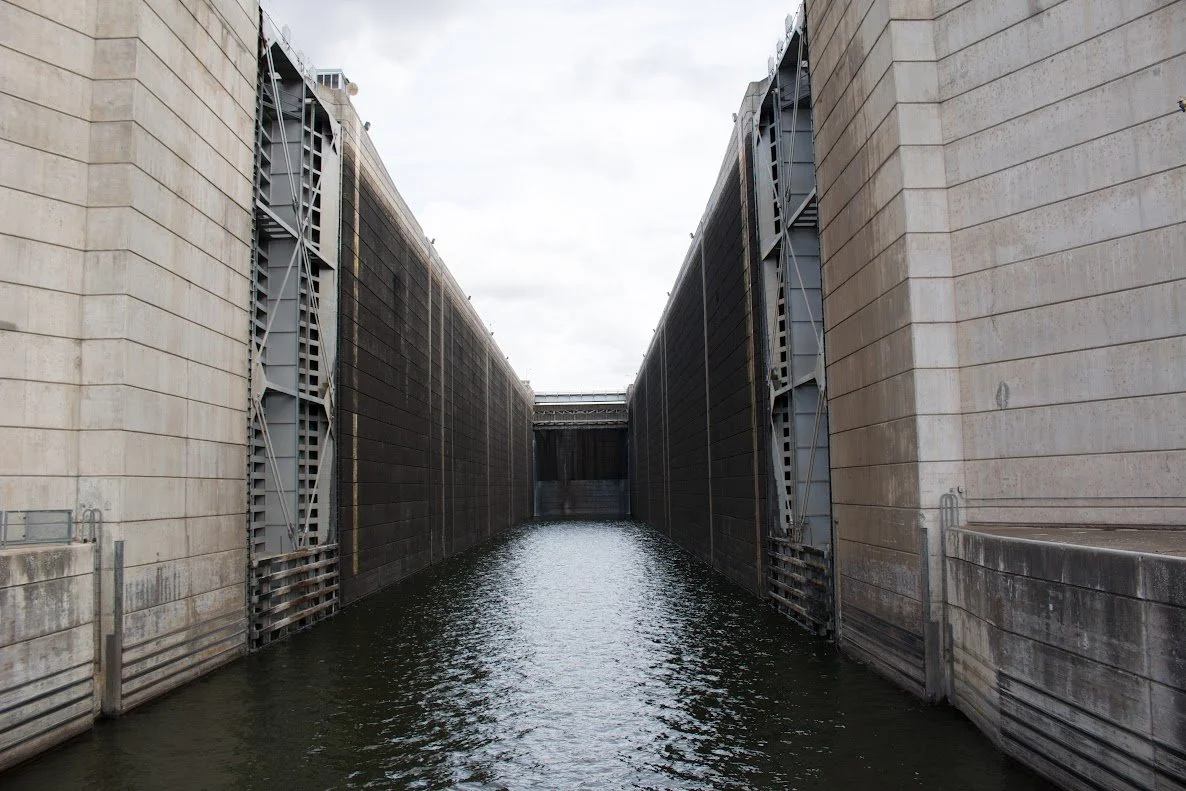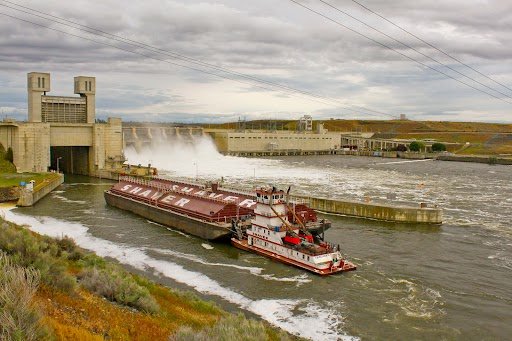Give A Dam
Agriculture relies on the Columbia and Snake River dams to move commodities to port.
In 2022, Washington farmers grew more than 2.3 million acres of wheat, for comparison, that’s nearly 2.3 million football fields resulting in 144 million bushels of high quality wheat! That’s the equivalent of 144,000 semi loads, or roughly 41,000 train cars, or only 2,750 barges.
If you've driven across the eastern part of Washington recently, more than likely you’ve seen a combine running across the hills, a grain semi rolling down the road, or massive piles of wheat sitting outside by a grain elevator. Said piles of wheat won’t be sitting there much longer. Soon they’ll be loaded on to train cars and semis and taken to the Snake river where it will be loaded onto a barge and sent down stream to be milled into national and international wheaty goodness.
Once on the barge, the wheat will flow down river with the help of a tugboat to navigate the river and the series of locks and dams along the river. The dams play a pivotal role in preventing flooding and managing river height, and thanks to the locks on these dams, we’re able to send barges and ships downstream. A lock is a large chamber in the water with moveable gates on each end. As a barge enters a lock, water fills the chamber, which is then lowered to match the river depth on the other side of the lock, the gates in front of the barge open allowing it to proceed to the other side of the dam or to another series of locks.
Without these locks and dams the rivers would be unnavigable, which would cause us to ship all commodities and goods via train cars or semis, which are far less efficient and environmentally friendly than barges on the rivers. In addition to providing a great way to transport goods, the rivers and the dams produce a great deal of power, actually producing nearly 60% of the annual energy produced in the Northwest. This supplies the electricity needed in our region reliably and cost-effectively according to the Northwest Power and Conservation Council.
Once the barge successfully navigates the river, it proceeds to port, where the grain is then loaded onto a cargo ship and distributed to buyers across the globe. Wheat is the 3rd largest ag export in Washington state with our top markets of the Philippines, Yemen and Japan, according to the Washington State Department of Agriculture.
But why should you give a ‘dam’? Because Washington farmers have a social responsibility to feed Americans and consumers around the world as safely and efficiently as possible. Washington farmers do it as economically and environmentally friendly as possible, and the rivers and dams help them do that. The other option is to fill our roads with semis, and nobody wants that. The rivers and the dams provide sustainable, cheap power, provide safety from flood dangers, and also provide an environmentally friendly and efficient way to transport goods across our great state.






